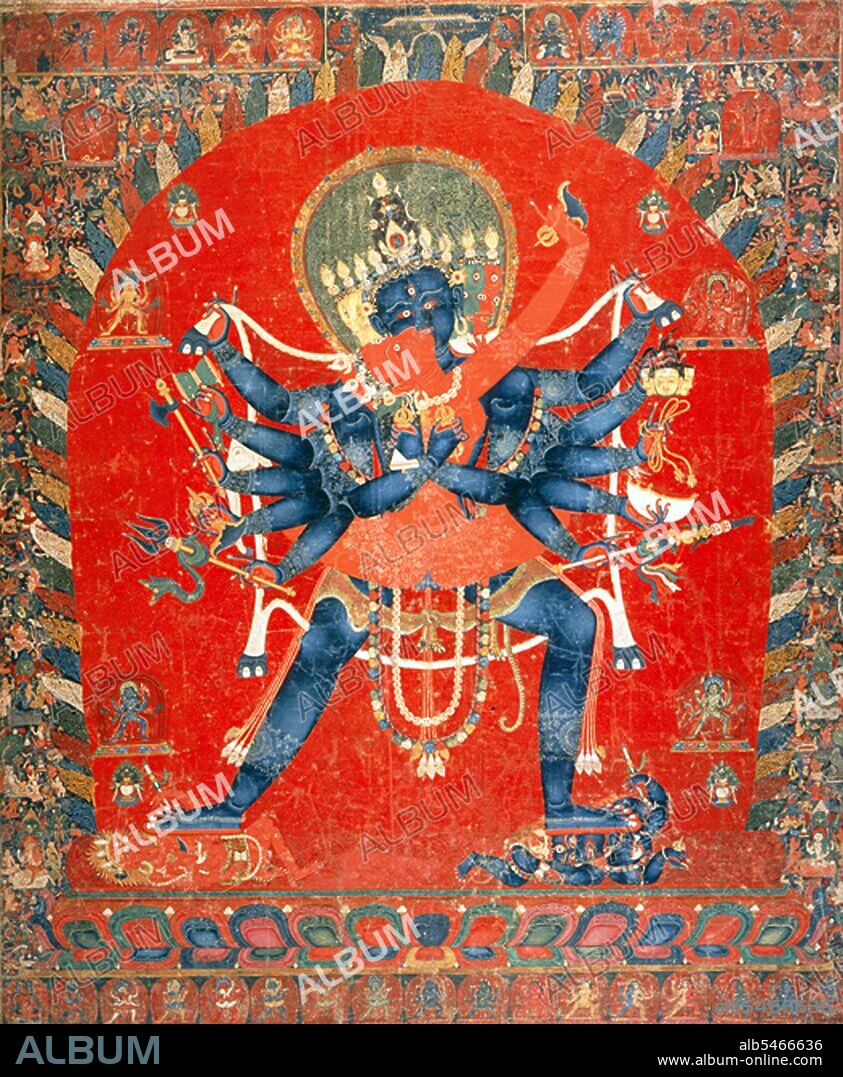alb5466636
China-Tibet: The Buddhist Deities Chakrasamvara and Vajravarahi, Newari thangka, c. 15th century

|
Ajouter à une autre Lightbox |
|
Ajouter à une autre Lightbox |



Avez-vous déjà un compte? S'identifier
Vous n'avez pas de compte ? S'inscrire
Acheter cette image

Titre:
China-Tibet: The Buddhist Deities Chakrasamvara and Vajravarahi, Newari thangka, c. 15th century
Légende:
Voir la traduction automatique
The Cakrasa?vara Tantra, Chinese: ???? shènglè jingang; Tibetan: Korlo Demchog Gyud (Tibetan: ?????????????? / ????????; Wylie: Khor lo sdom pa / bde mchog gi rgyud) is considered to be of the mother class of the Anuttara Yoga Tantra in the Indo-Tibetan Vajrayana Buddhist tradition. The central deity of the mandala, a heruka known as Sa?vara (variants: Sa?vara & Sa?bara) or simply as Sri Heruka, is one of the principal i??ha-devata, or meditational deities of the Sarma schools of Tibetan Buddhism. Sa?vara is typically depicted with a blue-coloured body, four faces, and twelve arms, and embracing his consort Vajravarahi (in Chinese ???? jingang hàimu) in the yab-yum position. Other forms of the deity are also known, with varying numbers of limbs. Sa?vara and consort are not to be thought of as two different entities, as an ordinary husband and wife are two different people; in reality, their divine embrace is a metaphor for the union of great bliss and emptiness, which are one and the same essence.
Crédit:
Album / Pictures From History/Universal Images Group
Autorisations:
Modèle: Non - Propriété: Non
Questions sur les droits?
Questions sur les droits?
Taille de l'image:
3800 x 4615 px | 50.2 MB
Taille d'impression:
32.2 x 39.1 cm | 12.7 x 15.4 in (300 dpi)
Mots clés:
ART (CATÉGORIE) • ART • ART, PEINTURE • ASIE • ASIE, CONTINENT • BOUDDHISME • BOUDDHISTE • BOUDDIQUE • BUDA • CHINE • CHINOIS • CHINOISE • CONTINENT ASIE • HISOIRE • HISTOIRE • PEINTURE • RELIGION • RELIGION: BOUDDHISME • TABLEAU • TABLEAUX • THANGKA • TIBET • TIBÉTAIN
 Pinterest
Pinterest Twitter
Twitter Facebook
Facebook Copier le lien
Copier le lien Email
Email
